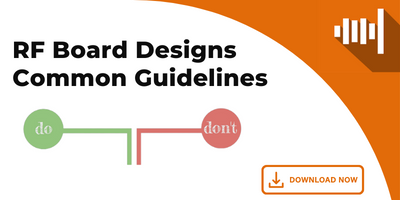
The harsh truth is, selecting the wrong quartz crystal oscillator can quickly kill any design. With the wide variety of options and specs available on the market today, selecting the perfect crystal oscillator for your design can be a difficult and time-consuming task.
That's why we're about to give you four simple questions you can ask yourself that will make it quick and easy to find the perfect crystal oscillator for your design.
4 Key Questions That'll Help You Find the Perfect Crystal Oscillator for Your Design
1. Do You Need a Crystal or an Oscillator?
This is a simple mistake that many engineers make. There is actually a big difference between quartz crystals and quartz crystal oscillators.
A packaged quartz crystal is simply a quartz crystal finely cut and polished to resonate at a very specific frequency when an electrical input is applied. A quartz crystal provides clock synthesis and precise timing when connected to a design with integrated oscillator circuitry. The quartz crystal alone does not provide a clock output.
Most consumer and battery-powered applications use a standard quartz crystal (along with a system-on-chip (SoC) device) because of cost, size, and power restrictions.

A quartz crystal oscillator (XO) is a complete device that contains the quartz crystal, oscillator circuit, output driver, and potentially a phase-locked loop (PLL). Unlike a quartz crystal alone, an oscillator does provide a clock output.
Crystal oscillators are more commonly used in higher-end applications such as data centers, telecom, satcom, defense operations and PNT, and so on. This is because oscillators are better at maintaining their frequency and low phase noise even in extreme temperature, vibration, and g-sensitive environments. Another benefit is that oscillators incorporate integrated power supply noise rejection to minimize the impact of board-level phase noise.
2. What Phase Noise Performance Do You Need?
Speaking of phase noise, it's important to know how critical maintaining low phase noise is for your application.
Phase noise, on a very basic level, is the amount of distortion or added noise in the clock's frequency signal. Since an oscillator is usually the main heartbeat of a timing system, maintaining low phase noise is typically desirable.
Low phase noise oscillators with <250 fs-RMS are crucial in high-performance applications. This is because high phase noise levels can lead to high bit error rates (BER) or even total loss of system communication. Therefore, it's always safer to start with a low phase noise clock source, especially in high-end applications. As you can see in the graph below, a compensated oscillator can significantly minimize phase noise in a high-vibration environment.

A hardware designer will not typically have a comprehensive set of phase noise requirements for all key components of the system. Reference designs are helpful in this case because the oscillator for the design has already been vetted.
Choosing a trusted and proven oscillator supplier with many low noise options is also a great way to help you find the best fit. It may be worth incurring a slightly higher cost for better phase noise requirements at first, then relax them down the road if needed.
Related: The Ultimate Guide to Understanding Phase Noise
3. Will Your Frequency Need to Change?
There are a few scenarios you might come across when deciding what frequency you need for your application:
- You will need an oscillator that maintains a single, specific frequency (e.g. a 10 MHz oscillator).
- You may need to change the frequency provided by the crystal oscillator (e.g. a video framer that needs to toggle between two different video frame rates of 297 MHz and 297/1.001 MHz).
- You will need to intentionally add a small frequency deviation to the oscillator as part of margin testing to stress-test the system-level setup and hold times.
There are many times when design engineers might not know exactly which frequency the final design will require, but they know they will need an oscillator to provide the reference. In this case, there are two main types of oscillators that can provide a solution:
- Dual and quad oscillators that can provide multiple pre-stored frequencies.
- I2C-programmable XOs that provide consistent low phase noise capabilities over a wide frequency range. This option offers the most frequency flexibility and can be reprogrammed to a nearly infinite number of frequency possibilities.
4. How Important Is Frequency Stability to Your Design?
In a nutshell, frequency stability is how much an oscillator's frequency drifts away from the desired frequency output. Frequency drift can occur based on a number of factors, including temperature, external vibrations, and g-forces. Timing errors or complete loss of communication is likely to occur if the frequency drifts beyond what the application demands.
Frequency stability is expressed in parts per million (ppm) and sometimes even parts per billion (ppb) for critical applications such as precise military and defense technology.
Quartz crystals slowly age over long periods of time, which causes the output frequency to drift slowly over time. A good crystal oscillator supplier will show aging levels at different time frames such as 1 year, 5 years, and 10 years at a given temperature (typically 25℃). When in doubt, it is safer to use a timing device with guaranteed specifications over more stringent conditions to provide more design margin.
Related: How to Prevent Frequency Perturbations in Crystal Oscillators
Where to Find the Perfect Crystal Oscillator
Bliley Technologies has almost a century of experience manufacturing quartz crystals and oscillators. We offer a wide variety of OCXOs, TCXOs, VCXOs, and clocks for many different high-performance and low phase noise solutions.
Explore our full line of oscillators and other frequency control devices >>






